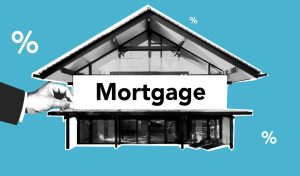Unlocking the Potential of Sustainable Housing Solutions
In our rapidly changing world, finding sustainable solutions for housing has become a top priority. As the global population continues to grow, the demand for housing also increases, putting a strain on resources and contributing to environmental degradation. In response, architects, engineers, and city planners have begun to focus on developing sustainable housing solutions that not only meet the needs of growing populations, but also minimize the impact on the planet. In this article, we will explore the potential of sustainable housing solutions and how they can transform the way we live while preserving our environment for future generations.
The Need for Sustainable Housing Solutions
The existing housing stock in many cities is not equipped to handle the demands of a growing population. Traditional building methods, such as concrete and steel, are resource-intensive and contribute to carbon emissions. In addition, they often result in buildings that are not energy-efficient and have a high impact on the environment. Rapid urbanization and the rise in housing costs have also resulted in overcrowding and inadequate living conditions for many people.
Sustainable housing solutions offer a way to address these challenges and create a more livable and inclusive environment. By incorporating sustainable design and building practices, we can reduce our environmental footprint and create healthier and more affordable housing options.
The Benefits of Sustainable Housing
Environmental Benefits
Sustainable housing solutions minimize the use of resources, reduce waste, and lower carbon emissions. By using renewable materials, such as bamboo and timber, and incorporating energy-efficient design, we can create buildings that have a minimal impact on the environment. In addition, sustainable housing can help mitigate the effects of climate change by reducing greenhouse gas emissions and promoting biodiversity.
Social Benefits
Sustainable housing also offers many social benefits. For one, it can improve the health and well-being of residents. Poor living conditions can have a negative impact on physical and mental health, and sustainable housing can help address these issues. Furthermore, sustainable housing promotes social inclusion by providing affordable and accessible housing options for low-income and vulnerable populations.
Economic Benefits
Building sustainable housing also has economic benefits. By using energy-efficient design and renewable materials, we can reduce long-term operating costs for residents. In addition, sustainable building practices can create job opportunities in the construction industry, and the use of local materials can support the local economy.
The Future of Sustainable Housing
The potential of sustainable housing solutions is immense. With advancements in technology and building practices, we can continue to push the boundaries of what is possible. From zero-carbon homes to smart buildings, the future of sustainable housing looks promising.
In addition, governments and organizations are recognizing the importance of sustainable housing and are implementing policies and initiatives to promote its development. For example, the European Union’s Green Deal aims to make all buildings in the EU climate-neutral by 2050. This will require a significant shift towards sustainable housing practices.
Conclusion
Unlocking the potential of sustainable housing solutions is crucial for creating a more environmentally-friendly, healthy, and inclusive society. By incorporating sustainable design and building practices, we can reduce our impact on the planet and create better living conditions for all. With the ongoing efforts and advancements in this field, we can look forward to a future where sustainable housing is the norm.











